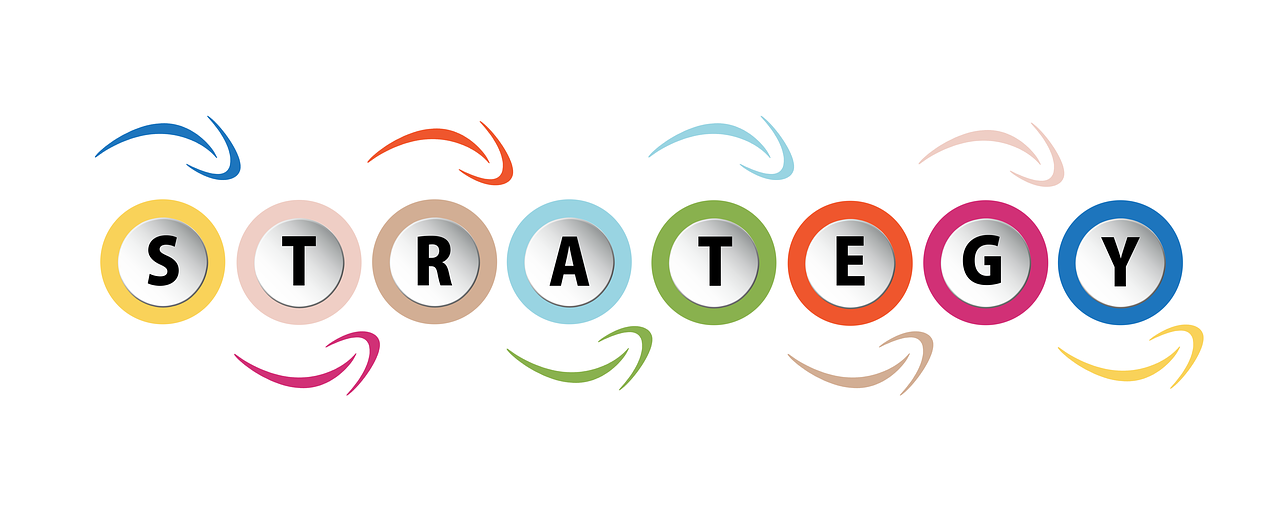Table of Contents
In the journey of life, there are those who think small and those who think big. Thinking big is like having a superpower—it propels you toward greater achievements and opens doors to boundless opportunities. But what does it truly mean to think big, and how can you cultivate this mindset? In this blog, we will explore the essence of thinking big, supported by scientific evidence, and uncover actionable steps to unleash its transformative power in your life.
“The future belongs to those who believe in the beauty of their dreams.” – Eleanor Roosevelt
Understanding the Concept
When we talk about thinking big, we’re talking about a mindset that goes beyond merely dreaming or setting goals. While dreams and goals are important components, thinking big encompasses a broader perspective and a deeper level of ambition.
Firstly, thinking big involves expanding your vision. It means looking beyond your current circumstances, beyond what you see immediately around you, and envisioning a future that is grander, more expansive, and more fulfilling. It’s about imagining possibilities that may seem out of reach or even impossible from your current vantage point.
Secondly, thinking big is about daring to pursue ambitious aspirations. It requires courage and boldness to aim for goals that are far beyond what others might consider achievable. Instead of playing it safe or settling for mediocrity, thinking big pushes you to reach for the stars and strive for excellence in every aspect of your life.
Moreover, thinking big challenges the notion of what is possible or realistic. Often, we tend to limit ourselves based on our past experiences, our perceived abilities, or societal expectations. We set boundaries for ourselves and confine our aspirations within those boundaries. However, thinking big breaks free from these constraints. It encourages you to stretch your imagination, to question the status quo, and to believe in the extraordinary potential that lies within you.
Ultimately, thinking big is not just about having grand ideas; it’s about taking concrete actions to turn those ideas into reality. It involves setting audacious goals and then diligently working towards achieving them, even in the face of obstacles or setbacks. It’s about embracing the journey of growth and transformation that comes with pursuing your wildest dreams.
The Science Behind Thinking Big

Lots of studies in psychology and neuroscience have shown how much thinking big can affect the way we act and what happens as a result. Here are some important scientific ideas that explain why thinking big is so powerful:
Neuroplasticity:
Neuroplasticity is the incredible ability of our brains to adapt, change, and form new connections throughout our lives. It’s like the brain’s way of constantly rewiring itself based on our experiences, learning, and interactions with the world around us.
When we expose ourselves to big ideas and challenging situations, our brain responds by rewiring itself to become better at thinking creatively. It’s similar to how we strengthen our muscles through exercise—by engaging in activities that push our mental limits, like learning new skills or tackling complex problems, we stimulate the growth of new neural pathways associated with expansive thinking.
In simpler terms, imagine your brain as a muscle that grows stronger when you challenge it. By embracing big ideas and facing tough challenges, you’re giving your brain a workout, making it more adept at thinking creatively and finding innovative solutions to problems.
Positive Psychology:
Positive psychology focuses on what makes people happy and successful, emphasizing factors like optimism, resilience, and a growth mindset. It’s about looking at the bright side of life, bouncing back from setbacks, and believing in our ability to improve through practice and effort.
Thinking big is closely aligned with the principles of positive psychology because it encourages us to maintain a positive outlook and believe in ourselves, even when faced with difficulties. When we think big, we naturally cultivate optimism and resilience, which are crucial qualities for overcoming obstacles and pursuing our goals with determination.
To illustrate, think of positive psychology as the sunshine that brightens our path, and thinking big as the compass that guides us towards our dreams. By embracing both, we equip ourselves with the mindset and resilience needed to navigate life’s challenges and pursue our aspirations with unwavering confidence.
Goal Setting Theory:
Goal Setting Theory is a concept in psychology that suggests setting specific and challenging goals can greatly motivate us to perform at our best. When we have clear and ambitious goals, we have a clear direction of where we want to go, and this clarity drives us to work hard and stay focused.
Thinking big means setting goals that are beyond what we might initially think is possible. These goals push us out of our comfort zones and encourage growth and action. When we set big goals that align with our vision of success, we stay motivated because we have a clear purpose driving us forward.
For example, imagine you want to start your own business. A small goal might be to make a little extra money on the side. But if you think big, your goal might be to build a successful company that changes people’s lives. This big goal gives you something exciting to work towards and motivates you to take the necessary steps to achieve it.
Cognitive Bias:
Cognitive biases are shortcuts our brains use to make decisions, but sometimes they can lead us astray. For instance, the status quo bias makes us prefer things to stay the same because change can be scary. Similarly, the negativity bias causes us to focus more on negative experiences or information than positive ones.
Thinking big helps us overcome these biases by encouraging us to question our assumptions and think differently. When we think big, we’re more likely to challenge the status quo and explore new possibilities. We become more open-minded and flexible, which allows us to see things from different perspectives and come up with innovative solutions.
For instance, let’s say you’re faced with a problem at work. If you’re thinking small, you might stick to the usual way of doing things because it’s safe and familiar. But if you’re thinking big, you’ll be more willing to consider alternative approaches and take risks to find the best solution. This mindset helps you break free from the constraints of cognitive biases and make better decisions that lead to greater success.
Practical Strategies for Thinking Big

Now that we understand the significance of thinking big from a scientific standpoint, let’s delve into practical strategies to cultivate this mindset:
Expand Your Horizons:
This strategy involves actively seeking out diverse experiences, perspectives, and knowledge sources. By reading widely, engaging in meaningful conversations, and exposing yourself to different cultures and viewpoints, you broaden your understanding of the world. This exposure fuels your imagination and inspires big thinking by challenging your preconceived notions and expanding your mental boundaries. When you expose yourself to new ideas and viewpoints, you develop a more nuanced understanding of complex issues, which can lead to innovative solutions and breakthroughs.
Set Audacious Goals:
Setting audacious goals involves challenging yourself to push the boundaries of what you believe is possible. Instead of setting safe, easily achievable goals, aim for targets that stretch your capabilities and inspire you to strive for excellence. Breaking down these big goals into smaller, manageable steps enables you to create a roadmap for achievement. Visualizing your success vividly and maintaining unwavering faith in your ability to accomplish your aspirations keeps you motivated and focused on the end goal.
Embrace Failure as Feedback:
Failure is an inevitable part of the journey towards greatness. Instead of fearing failure, view it as an opportunity for growth and learning. When you encounter setbacks, analyse them objectively to understand what went wrong and extract valuable lessons from the experience. By embracing failure as feedback, you can refine your approach, adapt your strategies, and move closer to your goals with greater resilience and determination.
Surround Yourself with Visionaries:
Surrounding yourself with individuals who think big and embody the qualities you aspire to cultivate is essential for personal growth and development. Seek out mentors, role models, and peers who challenge and inspire you to reach new heights. Collaborating with like-minded visionaries fosters a culture of innovation and creativity, where ideas can flourish and dreams can become reality. The synergy generated through such relationships amplifies your efforts and accelerates your progress towards success.
Practice Visualization and Affirmations:
Visualization and positive affirmations are powerful tools for reinforcing your belief in your potential and aligning your subconscious mind with your goals. Regularly visualize yourself succeeding in your endeavours, picturing every detail of your desired outcome with clarity and intensity. By affirming your capabilities and worthiness of achieving greatness, you cultivate a mindset of confidence and self-assurance that propels you towards success.
Take Bold Action:
Finally, thinking big requires more than just dreaming—it demands bold and decisive action. Overcome inertia and fear of failure by adopting a bias towards action. Break out of your comfort zone, seize opportunities, and persistently pursue your aspirations with determination and resilience. By taking bold action towards your goals, you turn your dreams into reality and create the momentum necessary for continuous progress and growth.
Conclusion
Thinking big means daring to dream beyond limits and believing in yourself to achieve those dreams. Through scientific research, we’ve learned that our brains are flexible and can adapt to new ways of thinking. By setting ambitious goals, embracing failure as a learning opportunity, surrounding ourselves with positive influences, and taking bold action, we can cultivate a mindset of thinking big. So, whether it’s in school, work, or life, remember to think big, take risks, and chase your dreams—you never know what incredible things you can accomplish until you try.















